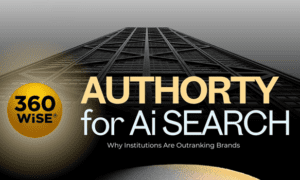Artificial Intelligence is revolutionizing pharmaceuticals, accelerating drug discovery, and optimizing clinical trials. Yet, despite its clear potential, AI’s integration remains riddled with obstacles—from regulatory hurdles to data privacy concerns and industry skepticism.
Ayelet Richter, an investor and advisor in biotech and AI-driven healthcare startups, explores the key challenges slowing AI adoption in pharma. Drawing from her extensive experience in business strategy, corporate development, and emerging technologies, she offers insights on how pharmaceutical leaders can navigate these hurdles and position AI as a catalyst for drug development innovation.
Regulatory Complexity: Bridging the Gap Between AI and Compliance
Pharma regulations weren’t built for AI-driven drug discovery. They were designed for human-led research, where new drugs undergo years of clinical testing and review. Now, AI generates potential treatments in record time—but the approval process hasn’t caught up.
Regulatory agencies like the FDA, EMA, and PMDA struggle to evaluate AI-driven discoveries due to outdated validation protocols and the opaque nature of many AI models. This results in long delays, as compliance frameworks weren’t written with AI-driven drug discovery in mind.
Early Engagement with Regulatory Agencies
Pharma companies should work with agencies like the FDA and EMA before bringing AI-based discoveries to market. Pre-market programs allow for discussions that reduce surprises and roadblocks later.
Developing Explainable AI (XAI)
Regulators are more likely to approve AI-driven treatments when they understand how decisions are made. XAI enhances transparency, enabling regulators to evaluate reasoning and outcomes. Companies that prioritize interpretability in their AI models will face less pushback.
Establishing Standardized AI Validation Protocols
AI in pharma requires validation frameworks for consistency and reliability. Companies that take the lead in helping define these will benefit from a smoother approval process in the future.
Data Accessibility and Security: Overcoming Fragmentation
AI is only as good as the data it trains on. Yet, in pharma, critical data is locked within hospitals, research institutions, and corporate silos. Privacy regulations like HIPAA, GDPR, and CCPA further restrict access, making it difficult for AI to leverage the diverse datasets needed for accurate predictions.
Meanwhile, cybersecurity threats are escalating. Ransomware attacks on healthcare systems put patient data and proprietary research at risk. AI’s potential means little if companies can’t keep their data secure.
Pharmaceutical companies and AI startups need creative approaches to data-sharing that respect privacy laws while still enabling research. Some strategies include:
- Strategic Data Partnerships: Agreements with hospitals, pharma firms, and research institutions to provide structured, de-identified datasets.
- Federated Learning: Train AI on decentralized data to maintain privacy while generating insights.
- Advanced Cybersecurity: Zero-trust security frameworks, encryption, and AI-driven threat detection should be standard.
Companies that invest in secure, privacy-compliant data-sharing models will unlock AI’s full potential—without compromising trust.
Industry Skepticism: Addressing Cultural Resistance to AI
AI is a massive shift for an industry built on careful, methodical research. Many pharma scientists, executives, and clinicians see AI as untested, untrustworthy, or even a threat to their expertise. Some fear AI will replace critical decision-making. Others worry about new risks beyond human control.
Richter suggests overcoming skepticism through education and proof of concept. Hands-on AI training can familiarize scientists with AI tools, showing how AI augments human expertise. Understanding AI’s ability to enhance efficiency—by automating tasks, optimizing trial designs, and identifying promising candidates—encourages integration into workflows.
Pilot projects must deliver measurable ROI (return on investment), demonstrating how AI improves efficiency, reduces costs, and accelerates drug discovery. Once executives see AI driving real-world impact, adoption shifts from skepticism to strategy.
Explainability and Trust in AI Predictions: The ‘Black Box’ Dilemma
AI’s lack of transparency remains a major hurdle. Many models operate as black boxes, making it difficult for regulators and executives to trust their predictions. Without clear reasoning, skepticism persists in clinical and regulatory environments.
AI will only gain traction in pharma if it’s transparent. Companies must prioritize XAI techniques that clarify decision-making processes, ensuring regulators, scientists, and executives can trust AI-driven insights. Peer-reviewed studies validating AI predictions against traditional methods will also enhance credibility and accelerate industry-wide adoption.

Image: Freepik
The Cost Barrier: Making AI Adoption Financially Viable
AI integration in the pharmaceutical industry is also a significant financial commitment. Developing AI-driven drug discovery models requires computing power, cloud storage, and AI specialists—investments that don’t guarantee immediate financial returns.
However, several cost-effective strategies are emerging:
- AI-as-a-Service (AIaaS): Instead of building AI infrastructure from scratch, companies can use cloud-based AI tools on a subscription basis.
- Government grants and biotech funding: Public-private partnerships can provide financial support to offset AI development costs.
- Pre-trained AI models: Using existing AI frameworks rather than starting from zero can significantly reduce expenses.
AI adoption is costly—but not prohibitive. Companies that explore flexible investment models will move forward without breaking their budgets.
Intellectual Property and Competitive Concerns
AI-driven drug discoveries raise complex questions about ownership and competitive advantages. Many pharma companies fear losing control over proprietary research. Who holds the rights—AI developers, pharmaceutical firms, or research institutions?
To protect innovation while advancing AI, pharma firms can develop custom AI models tailored to their research needs, ensuring proprietary data remains secure. Clear IP agreements must be defined upfront to prevent disputes. Additionally, blockchain technology can help track and verify AI-driven discoveries.
Ethical Considerations: Ensuring Fairness in AI-Driven Drug Discovery
Bias in AI models can lead to disparities in drug efficacy, disproportionately affecting underrepresented populations. Training AI mostly on Western data, for example, can make treatments less effective or unsafe for other groups. Additionally, AI clinical trial optimizations risk excluding diverse populations, widening health disparities.
Richter emphasizes the importance of:
- Bias-mitigation algorithms that detect and correct disparities.
- Diverse training datasets that reflect varied genetic and socioeconomic backgrounds.
- AI ethics committees within pharma firms to oversee responsible AI development.
Ethical AI isn’t just a regulatory necessity—it’s critical for equitable healthcare innovation.
The Future of AI in Pharma: A Call to Action
AI represents the next wave of innovation in the pharmaceutical industry. The only question is: who will lead the charge?
Companies that tackle regulatory barriers, strengthen data security, educate decision-makers, and invest strategically will drive the next wave of medical breakthroughs. There are AI-driven biotech startups that are already leading this transformation through explainable AI, collaboration, and ethical safeguards.
The future of drug development isn’t AI vs. human expertise. It’s AI with human expertise. The companies that get this balance right will define the next era of pharmaceuticals.



































